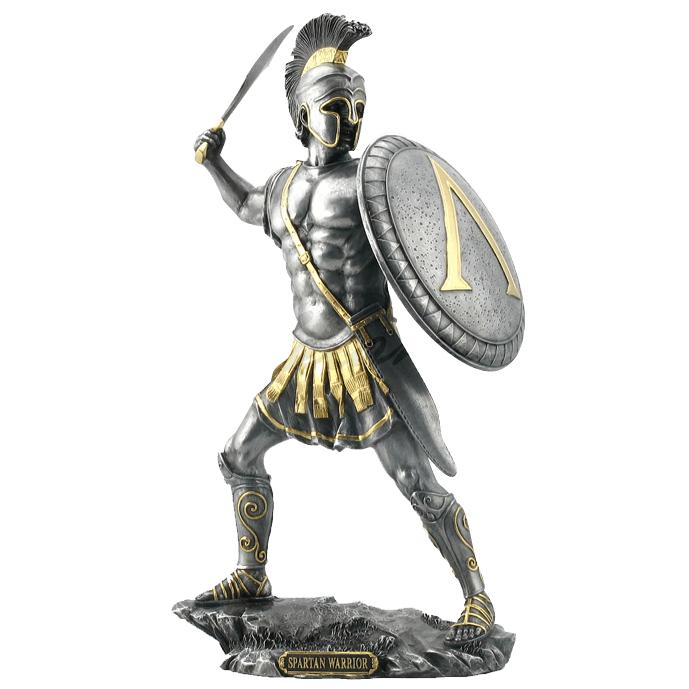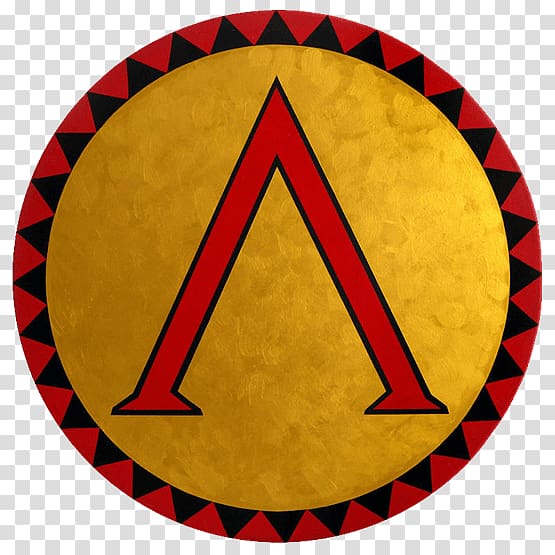

Due to the extent of the armour worn and the formation adopted, when a hoplite positioned himself for battle, a person of average size (170cm tall) wearing a full panoply had only 395cm2 (or 5.5 per cent) of their body exposed.

All up, when a tunic, footwear and padding under the armour are taken into consideration, a full panoply worn by the Greek hoplite weighed around 21kg.

Depending upon the style employed, the sword weighed around 2kg. The sword (xiphos/machaira) was the hoplite’s secondary weapon in close combat. Shaped to fit onto the lower leg, and held in place via the elasticity of the metal, greaves were designed to protect the lower legs from missile impacts and weighed around 1kg. On his legs a hoplite may have worn bronze greaves (knemis). The total weight of the helmet and crest was around 2.4kg. The most common style of helmet worn in Greece in the fifth century BC was the Corinthian helmet-an all encompassing, solid bronze helmet which protected the whole head from throat to crown, and which could be adorned with an additional crest made of stiffened horse hair. On his head a hoplite may have worn a helmet (kranos). The total weight of either bronze or linen armour was around 5.6kg. These curved surfaces on the front of the cuirass deflected incoming weapon strikes by increasing the respective angle of impact-thus requiring a greater amount of energy delivered in the strike to pierce it. It was a demonstration of wealth due to the cost of having such armour made it made the wearer look more impressive and frightening to an enemy and it reduced the amount of flat surfaces on the armour. The bronze cuirass of the fifth century BC was beaten into a stylized musculature representing a human torso. This could have been one of two types: a bronze plate cuirass approximately 1.5mm thick, or a linen composite armour (linothorax) made from gluing several layers of linen and/or hide together to make a material not unlike modern Kevlar. On his body a hoplite could wear some form of armour (thorax). The total weight of this weapon was around 1.5kg. The hoplite’s primary offensive weapon was a long thrusting spear (doru) which was approximately 2.5m long with a leaf-shaped iron head at the tip and a large bronze spike, known as a sauroter or `lizard killer’, on the back.

Occasionally faced with bronze (or having only its offset rim covered in bronze), and nearly 1m in diameter, the Greek shield weighed in the vicinity of 7kg. The left arm was inserted through a central armband (porpax), which the playwright Euripides states was custom made to suit the arm of the bearer, while the left hand grasped a cord (antilabe) that ran around the inner rim of the shield. The aspis was made from a solid wooden core turned on a lathe to create a shallow bowl-like shape which allowed its weight to be supported by the left shoulder. The hoplite shield (aspis) was a weighty piece of defensive armament specifically designed for the rigours of close combat and the Greek formation (the phalanx). To fight as a hoplite only two pieces of equipment were necessary-the shield and the spear-everything else was an optional extra. The equipment carried by a Greek hoplite was designed for only one thing-straight-up, hand-to-hand, combat. Herodotus refers to Greek hoplites as `men of bronze’ in a reference to the armour that they wore and this is a perfectly apt description.


 0 kommentar(er)
0 kommentar(er)
